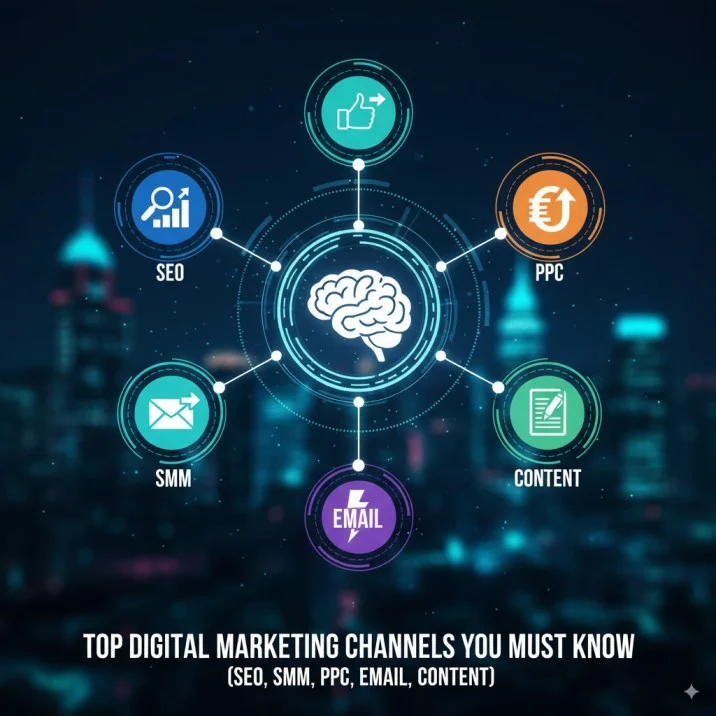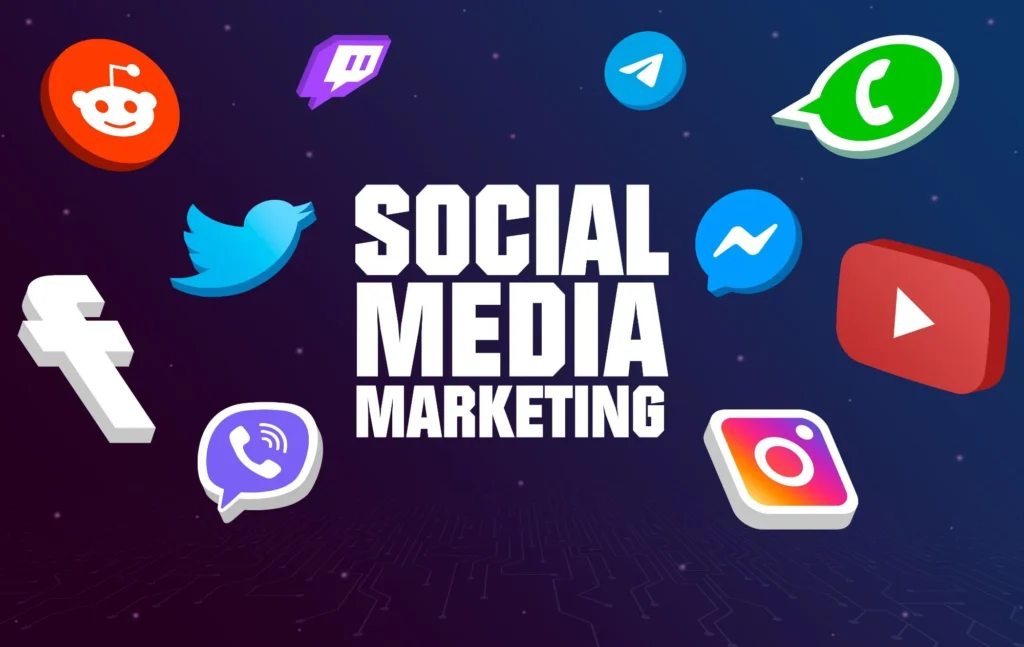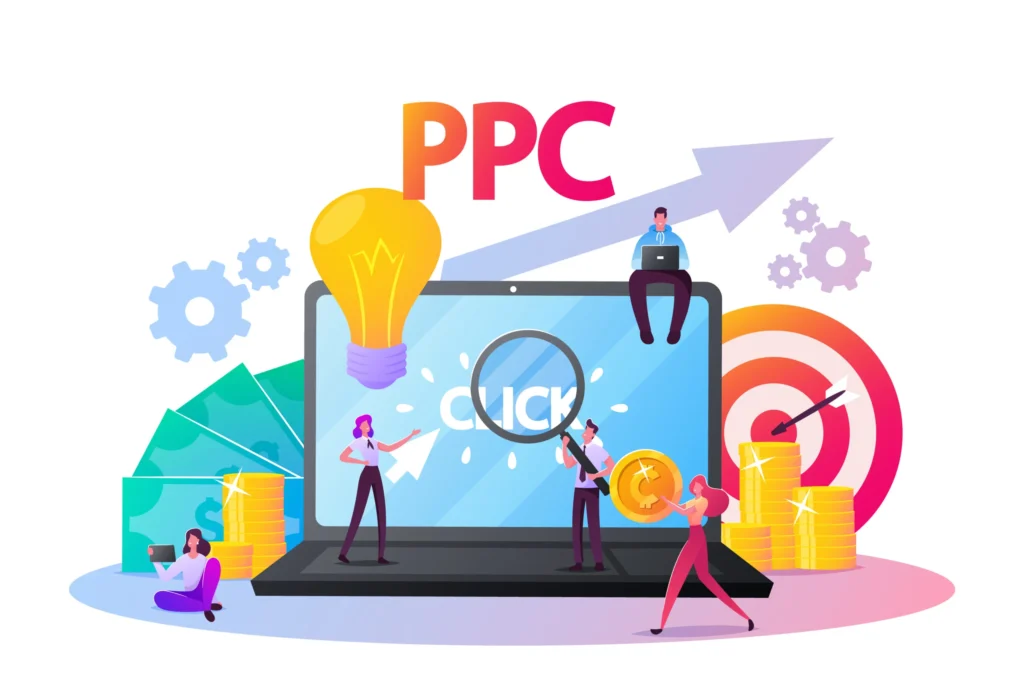Top Digital Marketing Channels You Must Know – SEO, SMM, PPC, Email, Content !
Posted On September 19th, 2025
Array
Hey everyone! If you’re looking to boost your online game, digital marketing is the way to go. It revolves around key strategies like search engine optimization (SEO), social media marketing (SMM), pay-per-click (PPC), email marketing, and content marketing. These channels help you reach more people, build stronger connections, and drive real growth for your business. In this detailed guide, I’ll break down each one step by step, sharing practical advice, real examples, and tips that actually work. Whether you’re just starting out or want to level up your digital marketing skills, you’ll find everything clear and easy to follow. Plus, I’ll show how these elements—SEO, SMM, PPC, email, and content—work together for maximum impact. Let’s get started and uncover the secrets to effective digital marketing!
First, why bother with digital marketing at all? In today’s world, almost everyone is online, scrolling through social media, searching on Google, or checking emails. So, if your business isn’t visible there, you’re missing out big time. Digital marketing lets you target the right audience at the right moment. For instance:
- SEO brings in free traffic over time.
- SMM creates buzz and community.
- PPC gives quick wins with paid ads.
- Email keeps customers coming back.
- Content builds trust and expertise.
Moreover, combining these channels creates a full-circle approach. You attract visitors with SEO and PPC, engage them via SMM and content, and convert them through email. However, success comes from understanding each part deeply. Additionally, always measure your results to tweak and improve. Now, let’s dive deeper into SEO, the foundation of many digital marketing strategies.
1. Mastering Search Engine Optimization (SEO) for Ultimate Digital Marketing Growth
Search engine optimization, commonly known as SEO, is a core pillar in digital marketing. It focuses on improving your website’s visibility on search engines like Google or Bing. When someone searches for terms related to your business, you want your site to appear high in the results. Why? Because most users click on the top few links, and that traffic is organic—meaning it’s free and sustainable.
To explain further, SEO isn’t magic; it’s a mix of smart tactics. You optimize your site so search engines understand your content and deem it valuable. As a result, you rank higher, get more visits, and potentially increase sales. In fact, businesses that invest in SEO often see long-term returns, unlike paid ads that stop when the budget runs out.
Understanding the Basics of SEO
- What SEO Involves: It covers on-page, off-page, and technical elements.
- Why It’s Crucial in Digital Marketing: SEO drives 53% of all website traffic, according to studies.
- Key Goal: Match user intent—give people what they’re searching for.
Step-by-Step Guide to Keyword Research in SEO
Keyword research is the starting point for any SEO strategy in digital marketing. You find words and phrases people use, like “digital marketing strategies” or “best SEO tools.” Tools help here:
- Use Google Keyword Planner for free insights on search volume and competition.
- Try SEMrush or Ahrefs for deeper analysis, including synonym suggestions.
- Focus on long-tail keywords, such as “how to improve SEO for small businesses,” because they’re easier to rank for and convert better.
Once you have keywords, integrate them naturally. For example, place your main keyword in the first paragraph, headings, and throughout the content without forcing it.
On-Page SEO Techniques That Work
On-page SEO happens right on your website. You control it fully, so make the most of it.
- Title Tags and Meta Descriptions: Craft titles under 60 characters with keywords, like “Essential SEO Tips for Digital Marketing Pros.” Meta descriptions should entice clicks, around 150 characters.
- Header Tags: Use H1 for main titles, H2 for subheadings, and include synonyms like “search optimization” or “web ranking strategies.”
- Content Optimization: Write high-quality, original content. Aim for 1,500+ words per page for depth, but keep it readable with short paragraphs.
- Image Alt Text: Describe images, e.g., “digital marketing SEO infographic,” to help search engines and accessibility.
- Internal Linking: Link to other pages on your site to keep users engaged and distribute page authority.
Additionally, ensure your content answers questions thoroughly. For instance, if someone searches “what is SEO,” explain it simply, then dive into benefits and steps.
Off-Page SEO: Building Authority
Off-page SEO builds your site’s reputation elsewhere on the web.
- Backlinks: Get links from trusted sites. How? Create valuable content that others want to share.
- Guest Posting: Write articles for industry blogs, including a link back to your site.
- Social Shares: While not direct ranking factors, shares from SMM boost visibility.
- Directories: List your business on reputable ones like Yelp for local SEO.
Tools like Moz’s Link Explorer help monitor backlinks. Remember, quality over quantity—one link from a high-authority site beats ten from low-quality ones.
Technical SEO Essentials
Technical SEO ensures your site is crawlable and user-friendly.
- Site Speed: Compress images and use caching; aim for under 3 seconds load time.
- Mobile Responsiveness: Test with Google’s Mobile-Friendly Tool, as mobile searches dominate.
- XML Sitemaps: Submit to Google Search Console to help indexing.
- HTTPS Security: Switch to secure protocols to avoid warnings.
- Structured Data: Add schema markup for rich snippets, like star ratings in search results.
If you skip technical SEO, even great content won’t rank well. Regularly audit your site with tools like Screaming Frog.
Local SEO for Brick-and-Mortar Businesses
If you have a physical location, local SEO is a game-changer in digital marketing.
- Google My Business: Claim and optimize your profile with photos, hours, and services.
- Reviews: Ask satisfied customers for feedback; respond to all reviews.
- Local Keywords: Use terms like “SEO services in New York” in your content.
- NAP Consistency: Ensure Name, Address, Phone are the same everywhere online.
This boosts your appearance in “near me” searches, driving foot traffic.
Common SEO Mistakes and How to Fix Them
Many fall into traps, but you can avoid them.
- Keyword Stuffing: Use keywords 1-2% density; focus on natural flow.
- Ignoring Analytics: Set up Google Analytics to track metrics like organic traffic and bounce rate.
- Not Updating Content: Refresh old posts with new info to maintain rankings.
- Black-Hat Tactics: Steer clear of buying links; it leads to penalties.
Real-Life SEO Success Story
Take a local coffee shop that struggled with online visibility. They researched keywords like “best coffee in town” and optimized their site. They also built backlinks through partnerships and encouraged reviews. Within a year, their organic traffic surged by 150%, leading to packed stores. That’s SEO in action for digital marketing.
In summary, SEO takes time but pays off hugely. It integrates seamlessly with other channels like SMM for sharing optimized content or PPC for testing keywords. Next, let’s move to SMM, where engagement reigns supreme.

2. Elevating Your Presence with Social Media Marketing (SMM) in Digital Marketing
Social media marketing, or SMM, transforms how brands interact in the digital marketing landscape. Platforms like Facebook, Instagram, X (formerly Twitter), LinkedIn, TikTok, and YouTube let you connect directly with audiences. You post content, run ads, and engage to build relationships and drive traffic.
Why prioritize SMM? With over 4.5 billion users worldwide, it’s where conversations happen. Plus, it humanizes your brand, fosters loyalty, and amplifies other efforts like SEO through social signals.
The Fundamentals of SMM
- Platform Selection: Match your audience—Instagram for visuals, LinkedIn for professionals.
- Content Variety: Mix posts: 80% value-driven, 20% promotional.
- Engagement Focus: It’s not just broadcasting; it’s two-way communication.
Developing a Winning SMM Strategy
Start by defining goals, like increasing followers or generating leads.
- Audience Research: Use platform analytics to understand demographics and interests.
- Content Calendar: Plan posts in advance—e.g., Monday motivations, Wednesday tips on digital marketing.
- Visuals Matter: Use high-quality images and videos; tools like Canva make it easy.
- Hashtags Strategy: Research trending ones like #DigitalMarketing, #SMMStrategies; use 5-10 per post.
Furthermore, schedule posts with tools like Buffer or Later to maintain consistency without daily effort.
Boosting Engagement in SMM
Engagement turns followers into fans.
- Respond Quickly: Answer comments and messages within hours.
- Run Contests: Encourage shares with giveaways tied to your brand.
- User-Generated Content: Repost customer photos with credit to build community.
- Stories and Reels: These short formats on Instagram and TikTok get high views.
- Live Sessions: Host Q&As on digital marketing topics to interact in real-time.
Track metrics like likes, shares, and click-through rates to see what works.
SMM Advertising Options
Paid SMM extends reach.
- Facebook Ads: Target by age, location, interests.
- Instagram Promotions: Boost posts for more visibility.
- LinkedIn Sponsored Content: Great for B2B digital marketing.
- Budget Tips: Start with $5-10 daily; test audiences.
Integrate keywords like “SMM tips” in ad copy for better relevance.
Integrating SMM with Other Channels
SMM doesn’t stand alone.
- With SEO: Share blog links to drive traffic.
- With Content Marketing: Promote videos or infographics.
- With PPC: Use social data to refine ad targeting.
- With Email: Collect emails via social sign-ups.
Avoiding SMM Pitfalls
- Inconsistent Posting: Stick to a schedule.
- Ignoring Negatives: Address complaints professionally.
- Over-Promotion: Balance sales with value.
- Not Analyzing: Use insights to pivot strategies.
A Real SMM Triumph
A clothing brand launched an SMM campaign on Instagram with user challenges using #MyStyleStory. They shared tips on digital marketing fashion trends. Engagement skyrocketed, gaining 20,000 followers and a 30% sales boost in months. SMM truly connects.
Now, transition to PPC, where you pay for precision.

3. Accelerating Results with Pay-Per-Click (PPC) in Digital Marketing
Pay-per-click advertising, known as PPC, is a fast-track method in digital marketing. You bid on keywords, and your ads appear on search engines or sites. You only pay when someone clicks—efficient and targeted.
PPC shines for immediate results, unlike SEO’s slow build. Platforms like Google Ads, Bing Ads, or social PPC offer vast reach.
PPC Basics Explained
- How It Works: Auction system—higher bids and quality scores win top spots.
- Benefits: Measurable ROI, quick setup, audience targeting.
- Types: Search ads, display ads, shopping ads.
Setting Up Your First PPC Campaign
- Goal Setting: Decide on awareness, traffic, or conversions.
- Keyword Selection: Choose relevant terms like “PPC management services”; include negatives to exclude irrelevants.
- Ad Creation: Write headlines with keywords, e.g., “Expert PPC for Digital Marketing Success.” Add extensions like site links.
- Landing Pages: Design pages that match ads, optimized for conversions.
Use Google’s Keyword Planner for ideas.
Advanced PPC Tactics
- Remarketing: Target past visitors with tailored ads.
- Audience Segmentation: By demographics, behaviors, or devices.
- Bid Strategies: Automated bidding for max clicks or conversions.
- A/B Testing: Test ad variations to optimize.
Monitor quality score—high scores lower costs.
Budgeting and ROI in PPC
- Start Small: Test with $100-500 monthly.
- Track Conversions: Use pixels to measure actions like purchases.
- Scale Up: Invest more in high-performing keywords.
Synergies with Other Digital Marketing Channels
- With SEO: Test keywords before optimizing organically.
- With SMM: Run social PPC alongside organic posts.
- With Email: Direct traffic to sign-up pages.
- With Content: Promote top-performing articles.
PPC Errors to Dodge
- Broad Match Keywords: Too vague; use exact or phrase match.
- Poor Landing Pages: Ensure relevance to avoid high bounce rates.
- Ignoring Data: Review reports weekly.
- Set-It-and-Forget-It: Adjust based on performance.
PPC Case Study
An e-book seller used PPC targeting “digital marketing guides.” With optimized ads and landing pages, they achieved a 5:1 ROI, turning $1,000 into $5,000 in sales monthly. PPC delivers when managed well.
Let’s shift to email marketing, the relationship builder.
4. Cultivating Connections Through Email Marketing in Digital Marketing
Email marketing remains a powerhouse in digital marketing. It involves sending targeted messages to subscribers’ inboxes to nurture leads, promote products, and build loyalty. With high ROI—around $42 per dollar spent—it’s cost-effective.
Unlike social media, you own your email list, so algorithm changes don’t affect reach.
Why Email Marketing Matters
- Personalization: Tailor content to user preferences.
- Direct Access: High open rates if done right.
- Automation: Save time with scheduled sends.
Building and Growing Your Email List
- Lead Magnets: Offer freebies like “SEO Checklist” for sign-ups.
- Website Forms: Pop-ups or embedded forms on blogs.
- Social Integration: Promote sign-ups via SMM.
- Compliance: Follow GDPR; use double opt-ins.
Crafting Effective Emails
- Subject Lines: Catchy and keyword-rich, e.g., “Unlock SMM Secrets in Digital Marketing.”
- Body Content: Short, scannable with bullet points; include CTAs.
- Design: Mobile-friendly templates from Mailchimp.
- Segmentation: Send different emails to new vs. loyal subscribers.
Email Campaign Types
- Welcome Series: Introduce your brand.
- Newsletters: Share content marketing pieces.
- Promotional: Announce sales with PPC-like urgency.
- Drip Campaigns: Automated sequences educating on topics like PPC.
Measuring Email Success
- Key Metrics: Open rates (20-30% good), click rates, unsubscribes.
- Tools: Mailchimp or Constant Contact for analytics.
- Testing: A/B test subjects, send times.
Integrating Email with Other Channels
- With SEO/Content: Send blog digests.
- With SMM: Cross-promote campaigns.
- With PPC: Retarget email openers.
Email Best Practices and Avoidances
- Frequency: 1-4 times monthly; don’t spam.
- Value First: Provide tips before selling.
- Clean Lists: Remove inactive subscribers.
- Personal Touch: Use names, segment interests.
Email Marketing Win
A software company sent personalized emails on “content marketing strategies.” Segmentation led to 35% open rates and 15% conversion increase. Email nurtures effectively.
Finally, content marketing ties it all.
5. Establishing Expertise via Content Marketing in Digital Marketing
Content marketing creates and shares valuable material to attract and retain audiences. It’s the glue for SEO, SMM, PPC, and email in digital marketing.
Content educates, entertains, and solves problems, positioning you as a leader.
Core of Content Marketing
- Types: Blogs, videos, podcasts, infographics.
- Purpose: Build trust, not just sell.
- Strategy: Align with buyer journey—awareness, consideration, decision.
Creating Compelling Content
- Research Topics: Use tools like AnswerThePublic for ideas on digital marketing.
- Writing Tips: Simple language, active voice, transitions like “however,” “additionally.”
- SEO Integration: Keywords naturally, long-form for depth.
- Visuals: Add images, videos for engagement.
Distribution Strategies
- SMM Sharing: Post snippets with links.
- Email Inclusion: Feature in newsletters.
- PPC Promotion: Advertise top content.
- Repurposing: Turn blogs into videos or podcasts.
Measuring Content Performance
- Metrics: Page views, time on page, shares.
- Tools: Google Analytics, social insights.
- Improvement: Update based on feedback.
Content Marketing Examples
- Blogs: “PPC vs. SEO: Which Wins?”
- Videos: Tutorials on SMM tools.
- Infographics: “Email Marketing Stats.”
Challenges and Solutions
- Consistency: Use calendars.
- Originality: Avoid plagiarism; add unique insights.
- Audience Fit: Survey for preferences.
Content Success Story
A blog focused on “digital marketing trends” shared via SMM and email. It generated 50,000 views and 1,000 leads quarterly. Content drives results.
Integrating All Channels for Digital Marketing Mastery
To maximize, blend them:
- Use content for SEO, share on SMM, promote via PPC, send in emails.
- Example: Create a guide (content), optimize (SEO), advertise (PPC), post teasers (SMM), email link.
Track overall with tools like HubSpot.
Wrapping Up: Your Digital Marketing Roadmap
Digital marketing thrives on SEO, SMM, PPC, email, and content. Experiment, analyze, adapt. Start today and watch growth happen!
Know everything about n8n -How to use and download for free! Click here to see.
Related Posts

Google Ads vs Meta Ads: Which Platform Delivers Better ROI in Digital Marketing?
Posted on October 31st, 2025
In today’s competitive digital marketing world, choosing the right advertising platform is crucial. When it comes to Google Ads, Meta Ads, digital marketing, and online ads, every marketer wants...
Read More →
The Best Countries Offering High Paying Jobs for Foreigners
Posted on October 25th, 2025
When people dream of success, they often picture a career that not only pays well but also opens doors to new experiences. Many foreigners look for high paying jobs...
Read More →
Best Niche Ideas : Profitable Niches to Grow Globally
Posted on October 23rd, 2025
Finding the best niche ideas is the first step to launching a successful business or blog. Whether you’re in India, the USA, or the UK, selecting a perfect niche...
Read More →
Google Search Generative Experience (SGE): How AI Search Is Redefining the Future of SEO in 2025
Posted on October 18th, 2025
The SEO world has entered a new era — one powered by AI Search and driven by the revolutionary Google Search Generative Experience. In 2025, the future of SEO...
Read More →© All Copyright Reserved japjitravel.com
Leave a Comment :